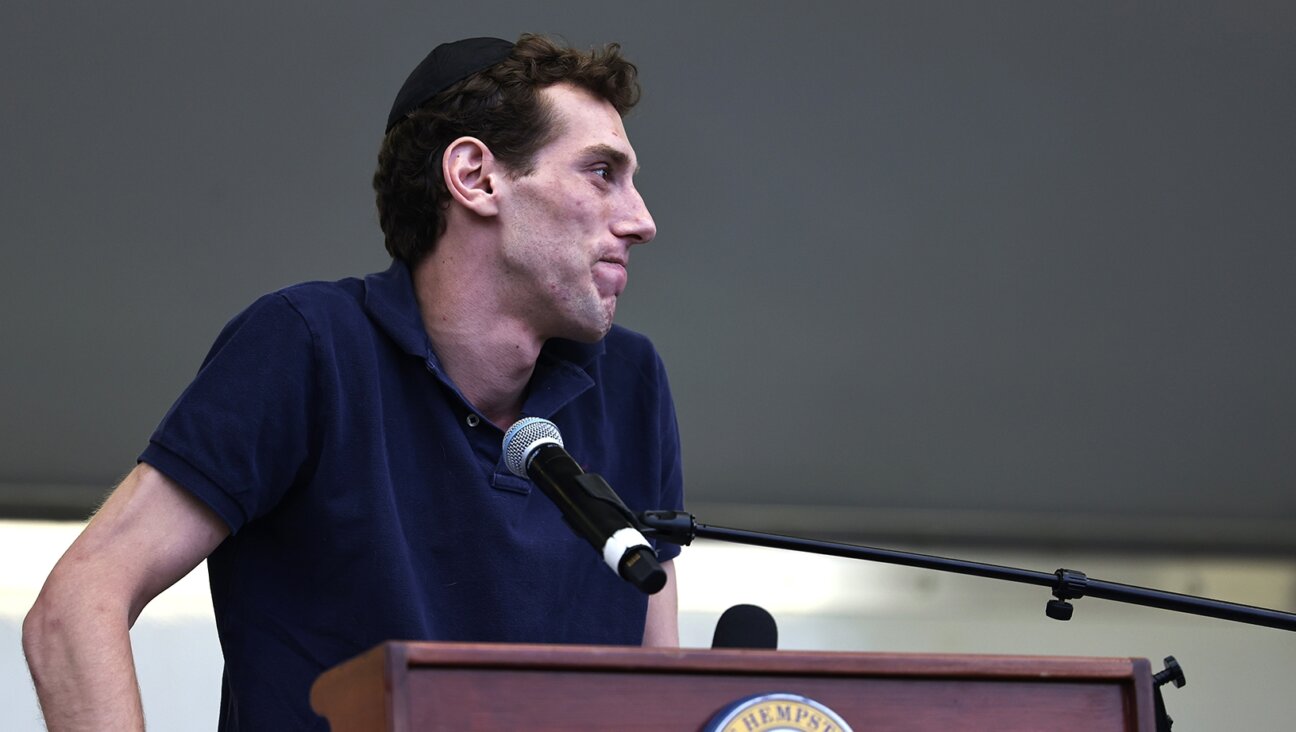A Wizard in the Classroom

Graphic by Angelie Zaslavsky
With his foot up in bed after surgery for a broken ankle, Rabbi Avraham Kivelevitz, a teacher at SAR High School in the Riverdale section of the Bronx, contemplated how to reach students taking his senior elective Kabbalah course. It was the start of the school year, and the plethora of English texts attempting to explain esoteric concepts wasn’t completely clicking for a group of 30 teenage boys and girls mostly intrigued with science fiction and magic.
“The kids, like society, had a confusion about what Kabbalah is,” Kivelevitz said. “That it’s a wild entry into something way beyond them and at the same time something that could be cool for them. But the amount of study needed, textual knowledge and meditation was something which they weren’t understanding.”
That’s when he remembered Rabbi Tzvi Freeman’s KabbalaToons on chabad.org, particularly an episode called “Kabbalistic FreeRunning.” Its main character, Rabbi Infinity, a wizardly kabbalistic rabbi with a long gray beard, blue robe and black belt boasting the letter “aleph,” is seen running while raving about the lessons learned from falling down after tripping.
“Those downward falls are meant to provide an impetus to forward motion, to get you way ahead of who you used to be and to get you there real fast,” Rabbi Infinity exclaims.
The point is that falls, like everything in life, have a higher purpose, Freeman, the toons’ creator, elaborates in the accompanying “Rabbi Infinity’s Blog.”
Kivelevitz began e-mailing links of the KabbalaToons and blogs to his students. When he recovered and returned to school, the teacher bridged concepts of science fiction with Kabbalah, such as shared motifs like evil and previous worlds.
Already fans of sci-fi films and superhero cartoons, the students became hooked on KabbalaToons.
Students began to realize “Kabbalah is everywhere,” Kivelevitz said. “They began to see a deeper sense of everyday things they take for granted.”
Kabbalah, a form of Jewish mysticism marked by a belief in creation through emanation, says that the mitzvahs, or Torah commandments, “are not merely ancient rituals, but have vibrancy,” Kivelevitz explained. After seeing the cartoons about the Jewish holidays, his students learned that matzo humbles the soul. “The mitzvoth took on an urgency and transformative quality,” Kivelevitz said.
Freeman, a Chabad rabbi who writes the content from his Toronto home, explains that the difficulty with teaching Kabbalah is that “it’s easily lost, you can only say it in riddles or metaphors. If someone doesn’t get it; it can be misinterpreted.”
Rabbi Infinity uses devices such as an “otifier” and “isifier” in his lab to illustrate concepts of creation. Objects, creatures and letters appear and disappear under a projector at the will of its inventor as a sort of mirror to the way God sustains his creations.
The toons helped Kivelevitz’s students understand what can be a confusing subject. When they began watching them, “it made them more ready to discuss Kabbalah,” Kivelevitz said. “KabbalaToons saved the curriculum. It was the glue that allowed it to work.”
The success of the cartoons has even been drawing attention at animation festivals. A festival in Moscow plans to screen KabbalaToons for its upcoming Jewish animation slot.
It won’t be the first time the toons will reach an international audience, either. Thousands of viewers of all ages, from virtually every city and religious background, watch the biweekly episodes on the Chabad Web site, which aims to utilize Internet technology to employ a deeper knowledge of Judaism.
The real restriction is getting all those lofty ideas down to one bite-size minute. Pilar Newton, a 30-something non-Jew who resides in the Park Slope section of Brooklyn, does just that. She spends her days animating the cartoons, which began two years ago because Freeman, who is the director of chabad.org’s “Ask The Rabbi” service, had videos containing kabbalistic wisdom that he wanted to breathe life into.
The short videos featured Freeman teaching lessons with a prop: a laser gun, coconut or plant. Chabad.org wanted to use these as the basis for animation for their Jewish TV domain, which now has a large selection of original content on many different topics.
Freeman knew the cartoons would also be a perfect fit for classes and seminars. His early literacy software called “A to Zap,” which he designed for Sunburst in 1992 and featured his children’s voices, won numerous awards and is now used in many preschool classrooms.
Kivelevitz was so impressed with the cartoons’ impact that he invited Freeman, lecturer and author of many books on Jewish mysticism, including “Bringing Heaven Down to Earth” (Adams Media Corporation, 1999), to visit SAR last November and address the entire senior class. Weaving Kabbalah with the everyday, Freeman invited the audience to bring up any object and find its hidden meaning. A key ring with a fish connected them to the hidden world, and a student’s shoe was described as the body that keeps them grounded in this world.
“After Tzvi came, I showed a post [on chabad.org] about a woman deciding to abort a fetus with severe genetic defects,” Kivelevitz said. “We analyzed it according to Kabbalah — that the soul is not just an identity, personality or one’s intelligence, but it has a higher purpose.”
Freeman wrote that this soul’s purpose is to be a magnet of chesed, or kindness, to help rectify the world. One student thought this to be dehumanizing until she later visited a home for the disabled as a chesed project. After the visit, the student said she began to see the soul, as Kabbalah teaches, as more than a self-identity.
Sara Trappler Spielman is a freelance writer living in New York.















